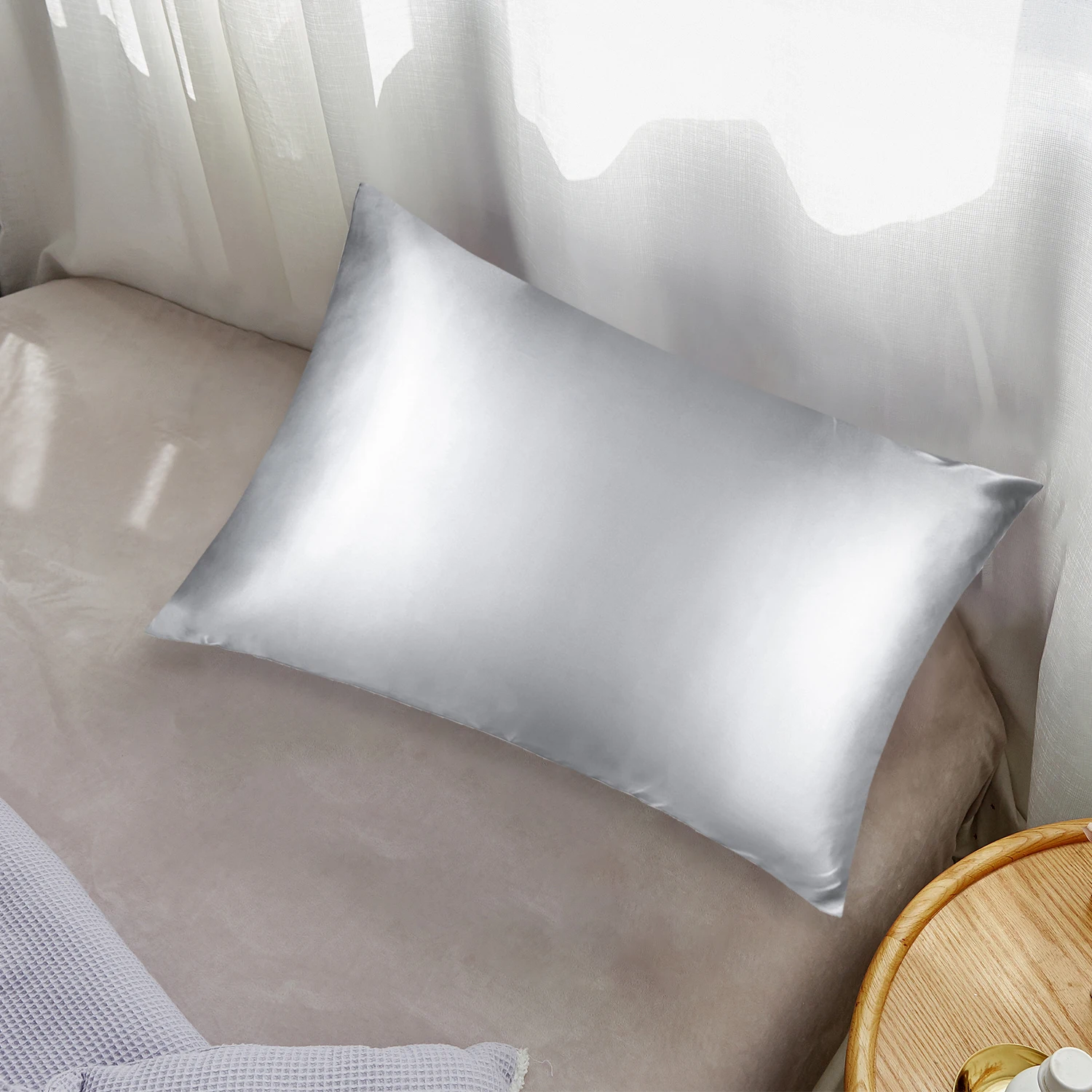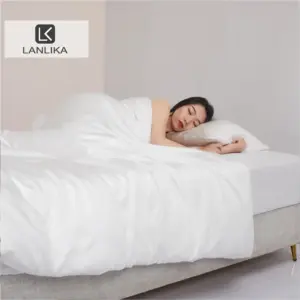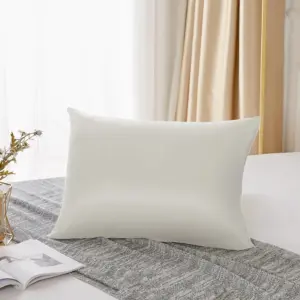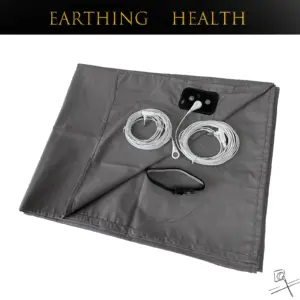Introduction
When shopping for silk products, particularly bedding, you’ll likely encounter two different measurements: momme weight and thread count. This can create significant confusion—which measurement truly indicates quality? Which one should you prioritize when making a purchase decision?
Understanding these measurements is essential for making informed silk purchases and getting true value for your money. The difference between seemingly similar silk products can be substantial, with price variations reflecting genuine quality differences that aren’t immediately apparent to the untrained eye.
Here’s what’s important to know from the start: momme is the primary and most reliable quality indicator for silk fabrics, while thread count is a measurement traditionally used for cotton and other fabrics. This distinction is crucial, as many consumers mistakenly apply cotton standards to silk products, often leading to disappointing purchases.
The amazing benefits of Mulberry silk sheets become most apparent when you select the right quality, and understanding these measurements is your first step toward enjoying the luxury of premium silk. In this comprehensive guide, we’ll clarify the differences between momme and thread count, explain why one matters more than the other for silk, and provide practical advice for evaluating silk quality.
What is Momme Weight in Silk?
Momme (pronounced “moe-mee” and often abbreviated as “mm”) is a unit of weight specifically used to measure the density of silk fabrics. Originating from traditional Japanese textile measurements, 1 momme equals 4.34 grams per square meter (0.14 ounces per square yard) of fabric. In more practical terms, it represents the weight in pounds of a piece of silk measuring 45 inches × 100 yards.
Momme weight directly indicates how much silk material is used in the manufacturing process. Higher momme weights mean:
- More silk has been used per square meter
- The weave is denser and tighter
- The fabric has greater physical weight
- The material typically has better durability and longevity
- The silk feels more substantial to the touch
When you handle silk of different momme weights, the differences become immediately apparent. Lightweight silk (under 16mm) drapes beautifully but appears somewhat transparent when held to light. In contrast, heavier silk (22mm and above) feels more substantial, offers greater opacity, and generally provides better insulation properties.
Understanding what momme means in silk provides the foundation for evaluating silk quality. Unlike arbitrary numbers in marketing materials, momme weight is a standardized measurement with direct correlation to the physical properties of the fabric—making it the trusted standard for silk assessment among experts and manufacturers worldwide.
What is Thread Count?
Thread count refers to the number of threads woven into one square inch of fabric, calculated by adding the number of vertical (warp) and horizontal (weft) threads. For example, fabric with 200 vertical threads and 200 horizontal threads per square inch would have a 400 thread count.
This measurement gained prominence in the marketing of cotton bedding during the 1990s and early 2000s, as consumers began associating higher thread counts with superior quality. For cotton and many other fabrics, thread count does have legitimate connections to quality—up to a certain point. Higher thread counts can indicate a finer, smoother weave and potentially greater durability in cotton fabrics.
However, the thread count metric has limitations and is subject to manipulation. Many manufacturers inflate thread count numbers by using multi-ply yarns (where multiple threads are twisted together) and counting each individual strand. This practice can result in marketed thread counts of 1000, 1200, or even higher—numbers that don’t necessarily translate to proportionally better quality.
Thread count is primarily applied to cotton, polyester, bamboo, and other fabrics with relatively thick fibers. Its development as a quality metric evolved specifically around the properties and manufacturing processes of these materials, making it most relevant within those specific contexts.
The concept of understanding thread count in silk sheets requires recognizing that it’s essentially applying a cotton-centric measurement to a fundamentally different material—an approach that doesn’t accurately capture silk’s unique properties.
Why Momme, Not Thread Count, Measures Silk Quality
The fundamental distinction between these two measurements lies in what they actually measure: momme quantifies weight and density, while thread count tallies the number of threads in a given area. This difference becomes critical when considering silk’s unique physical properties.
Silk fibers are extraordinarily fine—approximately one-fifth the diameter of a human hair. This exceptional fineness means that even basic silk fabrics would have thread counts in the thousands if measured by cotton standards, making thread count essentially meaningless as a comparative quality metric for silk.
Here’s why momme is the superior measurement for silk quality:
- Physical relevance: Momme directly measures the amount of silk material used, correlating strongly with durability, feel, and insulation properties.
- Manufacturing appropriateness: Silk production techniques differ significantly from cotton processing; weight measurement aligns better with how silk is produced.
- Fiber properties: Silk’s natural properties (strength, insulation, moisture-wicking) are better represented by density than by thread quantity.
- Industry standard: Established silk producers worldwide use momme as the definitive quality measurement.
- Consumer clarity: Momme provides a straightforward quality scale that’s harder to manipulate than thread count.
When manufacturers market silk using thread count, they’re often applying an inappropriate measurement standard that doesn’t accurately reflect the material’s quality. This practice can mislead consumers who are familiar with thread count from buying cotton products but don’t understand its limitations when applied to silk.
For a deeper exploration of this topic, thread count vs. silk quality examines the scientific basis for preferring weight-based measurements for silk evaluation.
How Momme Weight Affects Silk Quality
Momme weight directly influences virtually every quality aspect of silk fabric. This measurement isn’t just a number—it translates to tangible differences you can see and feel.
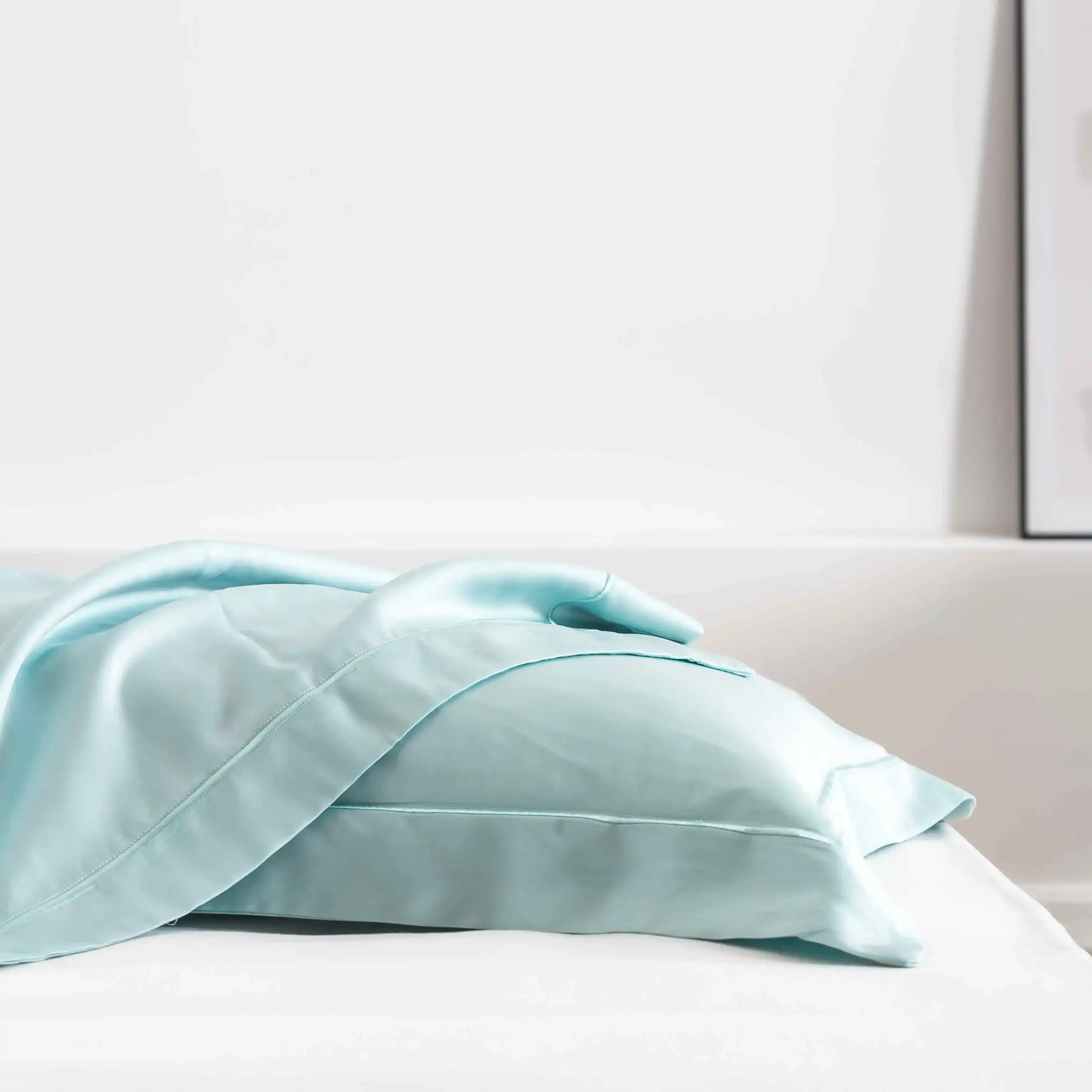
Here’s how momme weight affects key silk quality factors:
Durability and Longevity:
– Higher momme silk contains more silk material per square inch
– Greater density means more resistance to wear, tearing, and pilling
– Heavier silks typically maintain their appearance longer with proper care
Opacity and Transparency:
– 16-19 momme: Semi-transparent, light passes through easily
– 19-22 momme: Moderate opacity, some light filtration
– 22-25 momme: Substantial opacity, minimal light penetration
– 25+ momme: Nearly opaque, excellent privacy and light blocking
Texture and Feel:
– Lower momme silks (12-16) feel lightweight and ethereal
– Mid-range momme (19-22) provides balanced softness with substance
– Higher momme (22+) offers a luxuriously substantial hand-feel
Temperature Regulation:
– Higher momme silk generally provides better insulation in cold weather
– Even heavyweight silk maintains good breathability compared to synthetic fabrics
– The density affects how quickly the material responds to body temperature
Price Considerations:
– Higher momme requires more raw silk material, increasing production costs
– Quality increases with momme weight, but so does price
– The optimal value often lies in the mid-range (19-22 momme for bedding)
For most consumers, the practical difference between 19 momme and 25 momme is significant both in feel and performance. The complete guide to Mulberry silk bed sheets explores how these quality factors work together to create the exceptional sleep experience that premium silk bedding provides.
Recommended Momme Weights for Different Silk Products
Different silk products serve different purposes, and the ideal momme weight varies accordingly. Here’s a comprehensive guide to help you choose the appropriate momme weight for various silk items:
Lightweight Products (8-14 momme)
– Silk scarves and accessories
– Summer blouses and dresses
– Lingerie and camisoles
– Decorative accents
– Hair wraps and bonnets
Mid-weight Products (15-18 momme)
– Year-round clothing
– Everyday sleepwear
– Linings
– Decorative pillowcases
– Lightweight summer sheets
Standard Products (19-25 momme)
– Quality bedding (sheets, pillowcases)
– Premium pajamas and robes
– Dresses with structure
– Quality curtains
– Year-round comforters
Heavyweight Products (26+ momme)
– Winter garments
– Upholstery applications
– Premium draperies
– Heirloom bedding
– Items requiring maximum durability
For bedding specifically—the category where momme weight receives the most consumer attention—here are our recommendations:
| Product | Recommended Momme | Benefits at This Weight |
|---|---|---|
| Pillowcases | 19-22 momme | Balance of softness and durability for items washed frequently |
| Sheets | 19-25 momme | Optimal comfort with appropriate weight and drape |
| Duvet Covers | 22-25 momme | Extra durability for larger items that experience movement |
The ultimate guide to momme weight in silk bedding provides detailed analysis of these recommendations, but for most consumers, the 19-25 momme range represents the sweet spot between luxury and practicality for Mulberry silk sheets.
Beyond Momme: Other Important Silk Quality Indicators
While momme weight is the primary quality indicator for silk, several other factors work together to determine the overall quality of silk products:
Silk Type:
– Mulberry Silk: From domesticated silkworms fed exclusively on mulberry leaves, producing the finest, most uniform filaments
– Tussah/Wild Silk: From wild silkworms, resulting in stronger but less uniform fibers with a textured appearance
– Sea Silk: Rare, extremely lightweight silk with distinctive properties
– Spider Silk: Extremely rare, incredibly strong, but not commercially viable for most products
Silk Grade:
– 6A: The highest commercial grade, representing exceptional quality
– 5A: Excellent quality with minimal imperfections
– 4A and below: Progressively more imperfections and less consistent color
Weave Type:
– Charmeuse: The most common for bedding, with a smooth, lustrous face and matte back
– Habotai: Lightweight with a balanced weave, often used for scarves
– Chiffon: Very lightweight and somewhat sheer
– Crepe de Chine: Textured surface with excellent drape
– Satin: Smooth, glossy surface with a distinctive weave pattern
Production Methods:
– Hand processing tends to preserve fiber integrity
– Machine processing offers consistency but can stress fibers
– Traditional methods often yield higher quality but at higher cost
Understanding why choose Mulberry silk sheets involves considering these factors alongside momme weight. When evaluating 100% silk sheets, the combination of appropriate momme weight, high-grade Mulberry silk, and quality weave structure creates the exceptional sleep experience that premium silk promises.
Common Misconceptions About Silk Measurements
The world of silk quality metrics is filled with misconceptions that can lead to poor purchasing decisions. Let’s clarify some of the most common myths:
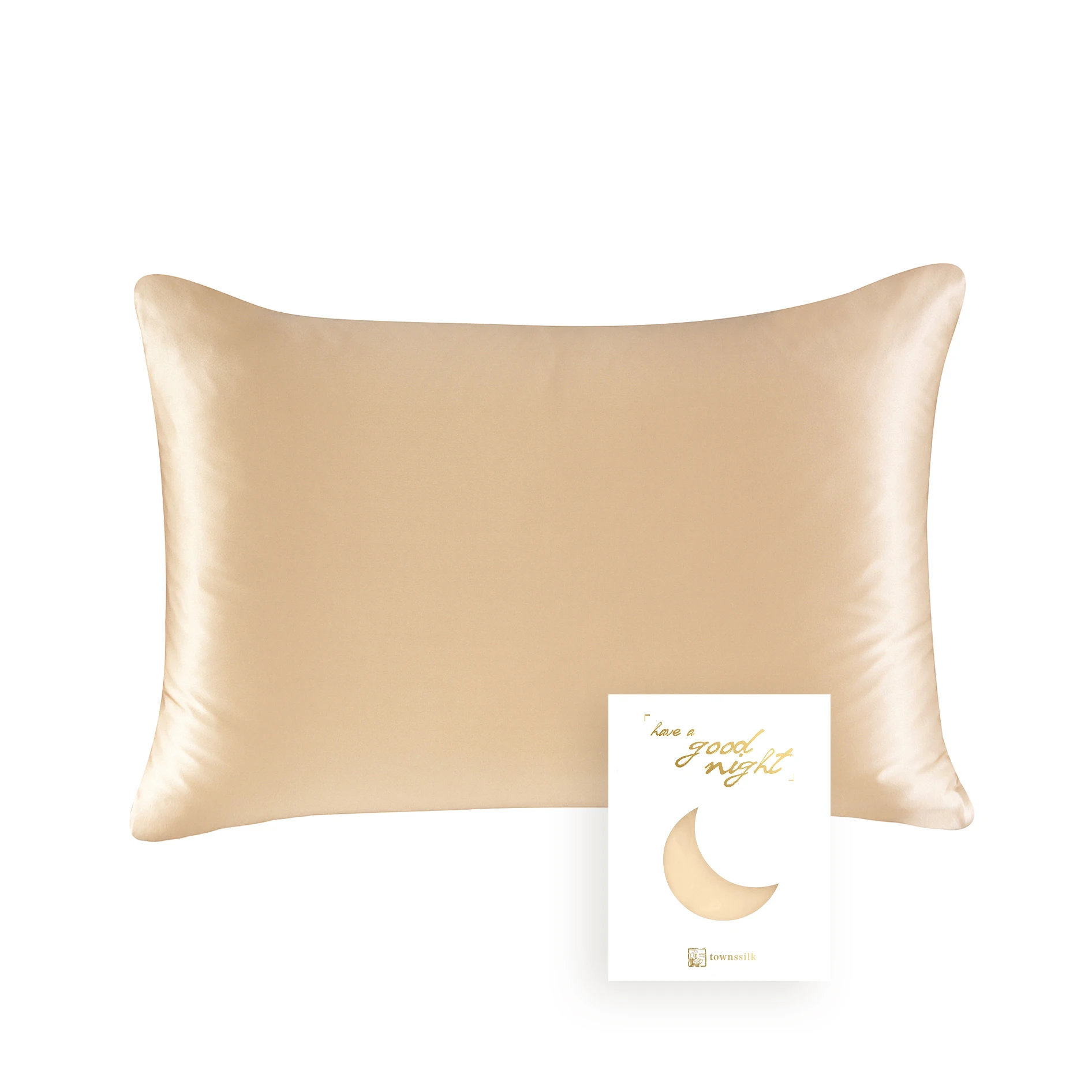
Myth: “Higher thread count silk is better quality”
Reality: Thread count is largely irrelevant for silk quality assessment. Due to silk’s extremely fine fibers, even basic silk would have thread counts in the thousands if measured by cotton standards. Some manufacturers use this confusion to their advantage in marketing.
Myth: “Momme and thread count measure the same thing”
Reality: They measure fundamentally different properties. Momme measures weight/density, while thread count measures the number of threads per square inch.
Myth: “Higher momme is always better regardless of product type”
Reality: The optimal momme weight depends on the product’s purpose. A 30 momme silk scarf would be unnecessarily heavy, while 12 momme bedsheets would be too fragile for regular use.
Myth: “Lightweight silk is always lower quality”
Reality: Lightweight silk (lower momme) can be perfect for specific applications like summer garments or scarves. Quality in silk relates to appropriate weight for the intended purpose, not simply higher numbers.
Myth: “Thread count doesn’t matter at all for silk”
Reality: While momme is the primary quality indicator, the construction quality (which includes aspects similar to thread count, like weave tightness) still matters. However, this is better assessed through momme weight than through cotton-style thread count measurements.
For a deeper exploration of these issues, the article “Does thread count matter in silk bedding?” addresses common misconceptions and provides clarity on what truly determines silk quality.
How to Identify Quality Silk Products When Shopping
Armed with knowledge about momme weight and other quality factors, you can confidently evaluate silk products while shopping. Follow this practical guide:
When Shopping Online:
Look for momme weight in product descriptions:
– Quality silk retailers always specify momme weight
– For bedding, look for 19-25 momme (19-22 for better value, 22-25 for luxury)
– Be skeptical of listings that only mention thread count for silkCheck for fiber content specifications:
– Look for “100% Mulberry silk” rather than just “silk” or “silk blend”
– Beware of terms like “silky,” “silk-like,” or “satin” without specific silk contentEvaluate the retailer’s knowledge:
– Reputable silk retailers provide detailed information about their products
– Look for educational content about silk quality on their website
– Quality brands will explain why momme matters rather than emphasizing thread countConsider price as a quality indicator:
– Quality 22 momme Mulberry silk sheets are a significant investment
– Prices that seem too good to be true often indicate lower momme, non-Mulberry silk, or blends
When Shopping In-Store:
Feel test: Quality silk with appropriate momme weight feels substantial but not heavy, with a distinctive cool, smooth touch
Light test: Hold the fabric up to light—higher momme silk will be less transparent
Scrunch test: Bunch the silk in your hand—quality silk should feel smooth, spring back quickly, and make a distinctive rustling sound known as “scroop”
Questions to ask retailers:
– “What is the momme weight of this silk?”
– “Is this 100% Mulberry silk or a blend?”
– “What grade of silk is used in this product?”
100% Silk Sheets, Green Silk Sheets, King Size Silk Bedding Set, Mulberry Silk Bedding Sets, Queen Size Silk Bedding Set
Price range: $1,246.21 through $1,615.22 Select options This product has multiple variants. The options may be chosen on the product page100% Silk Sheets, King Size Silk Bedding Set, Mulberry Silk Bedding Sets, Queen Size Silk Bedding Set, White Silk Sheets
Price range: $1,000.79 through $1,351.42 Select options This product has multiple variants. The options may be chosen on the product pageKing Size Silk Sheets, Pink Silk Sheets, Silk Flat Sheets
$132.96 Select options This product has multiple variants. The options may be chosen on the product pageKing Size Silk Pillowcases, Mulberry Silk Pillowcases, Queen Size Silk Pillowcases
Price range: $94.96 through $121.56 Select options This product has multiple variants. The options may be chosen on the product pageMulberry Silk Fitted Sheet, Mulberry Silk Sheets
Price range: $486.21 through $944.97 Select options This product has multiple variants. The options may be chosen on the product page- Price range: $153.18 through $158.04 Select options This product has multiple variants. The options may be chosen on the product page
For specific product recommendations, exploring our Mulberry silk pillowcases collection provides examples of quality silk with appropriate momme weights for different preferences.
Caring for Different Momme Weight Silk Products
The momme weight of your silk items affects not only their quality but also how you should care for them. Proper maintenance ensures your silk investment maintains its beauty and performance for years to come.
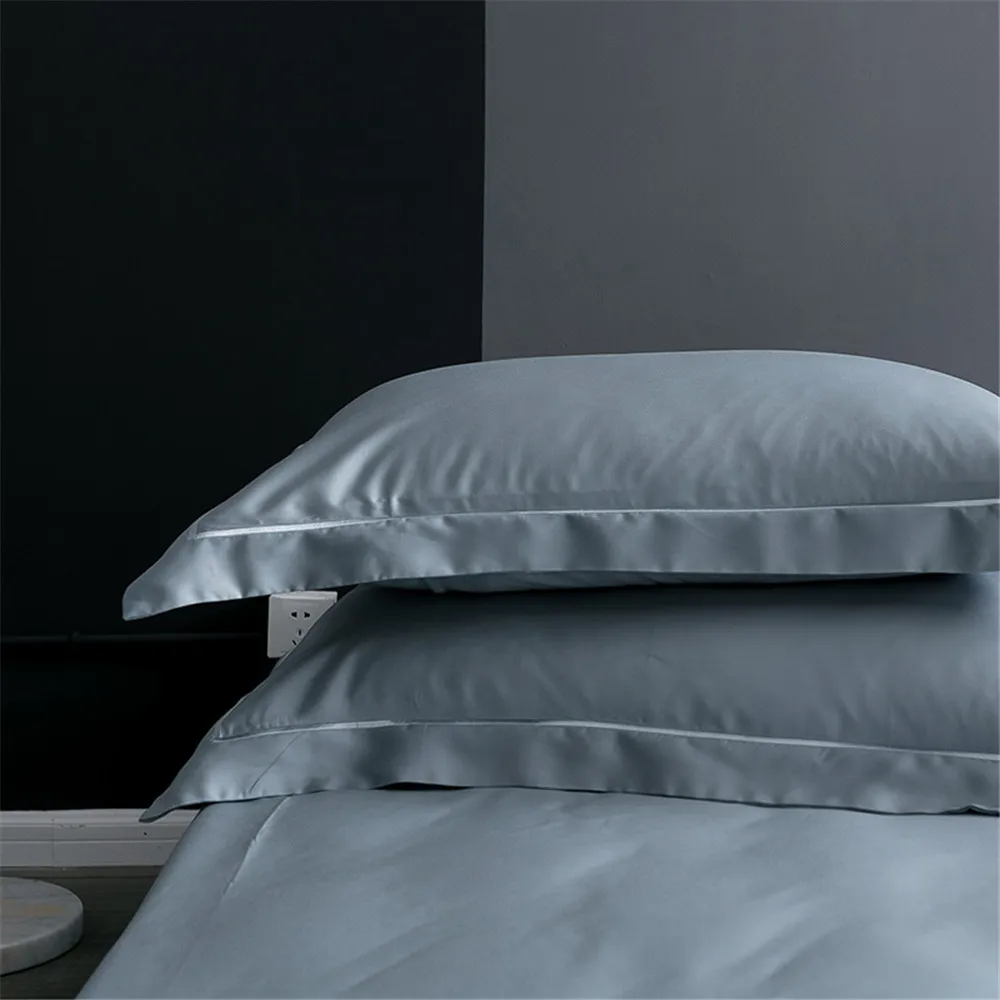
General Silk Care Principles (All Momme Weights):
– Hand wash or use delicate cycle with silk-specific detergent
– Use cold or lukewarm water (never hot)
– Avoid bleach and fabric softeners
– Air dry or tumble dry on lowest setting
– Iron on low heat with a pressing cloth if needed
– Store in breathable fabric bags, not plastic
Care Considerations by Momme Weight:
Lightweight Silk (8-14 momme):
– Most delicate handling required
– Hand washing strongly recommended
– Dry flat to prevent stretching
– Be extremely careful with jewelry or rough surfaces
– Best stored flat rather than hanging for long periods
Mid-weight Silk (15-18 momme):
– Can usually handle gentle machine washing
– May still snag on rough surfaces
– Benefits from less frequent washing
– Can be hung to dry but avoid direct sunlight
Heavyweight Silk (19+ momme):
– Most durable for regular use and cleaning
– Can generally withstand careful machine washing
– Less prone to wrinkling than lighter weights
– Better resistance to snags and pulls
– Can handle more frequent laundering
With proper care, quality luxury silk bedding sets will maintain their exceptional feel and appearance for many years. The higher the momme weight, the more resilient the silk typically is to regular use and washing, but all silk requires gentler care than synthetic or cotton alternatives.
FAQs About Silk Momme and Thread Count
Q: What is the minimum momme weight for quality silk bedding?
A: For bedding intended for regular use, 19 momme is generally considered the minimum threshold for appropriate durability and luxury feel. Anything below this may feel nice initially but typically won’t maintain its quality with regular use and washing.
Q: Can thread count ever be a useful measure for silk?
A: Thread count isn’t entirely irrelevant for silk, but it’s not standardized for silk evaluation and can be misleading. The construction quality that thread count attempts to measure in cotton is better assessed through momme weight in silk fabrics.
Q: How does momme weight affect the price of silk?
A: Higher momme silk requires more raw material and often more sophisticated production techniques, directly increasing costs. Generally, you’ll see approximately a 20-30% price increase between 19 momme and 25 momme products of similar quality in other respects.
Q: Is 22 momme silk worth the extra cost over 19 momme?
A: For bedding that will see regular use, the step up to 22 momme from 19 momme often represents good value, offering noticeably better durability and a more luxurious feel. The difference is most apparent in frequently used items like silk flat sheets.
Q: Why do some silk products not list momme weight?
A: When manufacturers don’t specify momme weight, it’s often because the number is on the lower end. Quality silk retailers almost always list momme weight as a point of pride and transparency about their products.
Q: How can I verify the momme weight claims of a product?
A: Without specialized equipment, exact verification is difficult. However, you can approximate through feel (substantial but not heavy), opacity (hold it up to light), and weight comparison with known silk products. Purchasing from reputable retailers with clear return policies is the best consumer protection.
Understanding these fundamentals of silk quality measurement helps ensure you select the right products for your needs and receive true value from your silk purchases. The difference in sleep quality and comfort between appropriate and inappropriate momme weight is substantial, making this knowledge essential for informed buying decisions.

